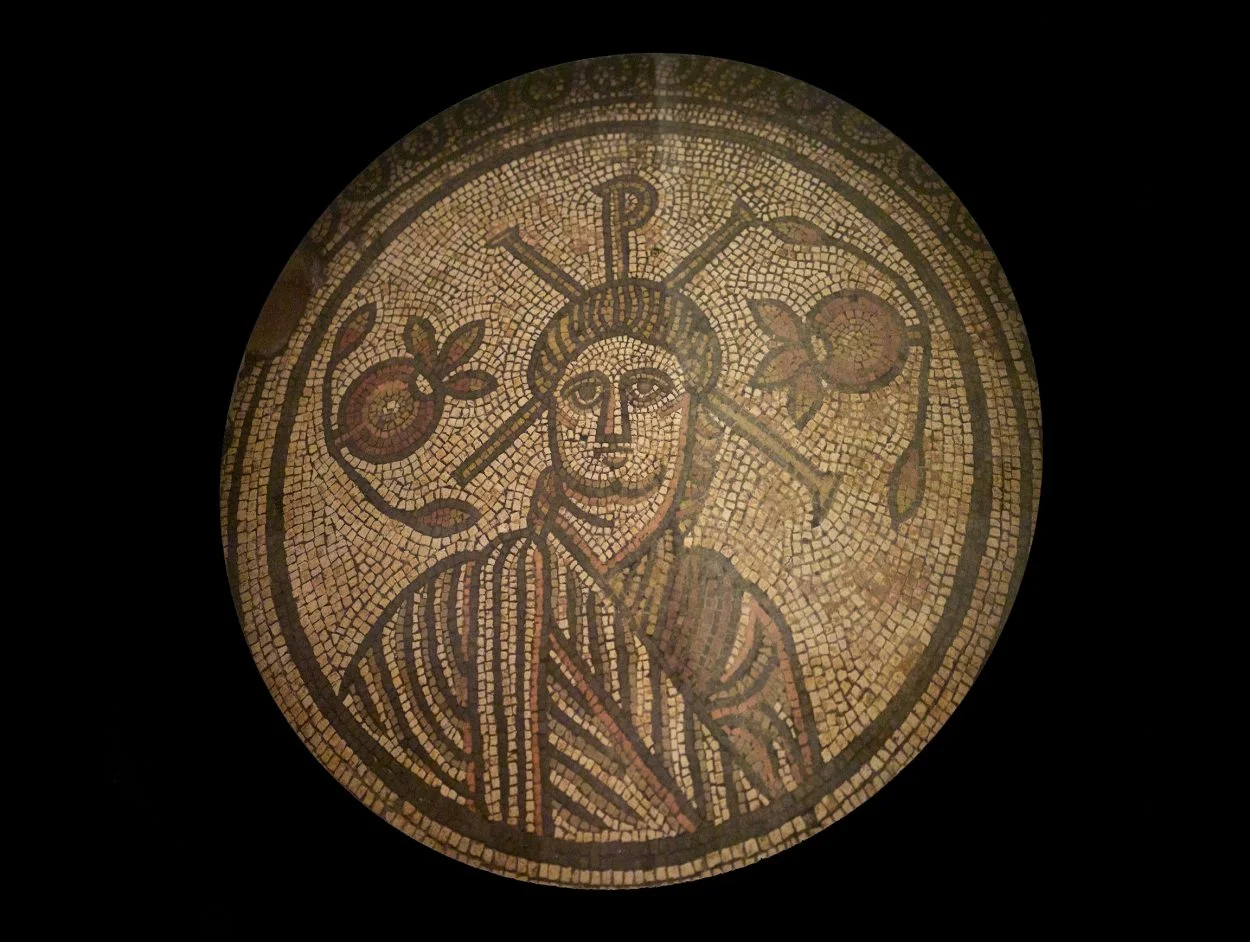Archaeologists have uncovered a second mosaic at the site of the famous Hinton St Mary Mosaic, first discovered in 1963 in Dorset, England.
The Hinton St Mary Mosaic is an almost complete mosaic that features a portrait bust of Jesus Christ (although the Emperor Constantine I has also been suggested) as its central motif, one of the earliest depictions of Christ in all of Christendom.
The site dates from the 4th century AD during the latter part of the Roman occupation of Britannia and has been attributed to the mosaic workshops of Roman Durnovaria (modern Dorchester).
The Hinton St Mary Mosaic covered two rooms, joined by a small, decorated threshold, with the larger of the rooms containing a portrait bust of a man in a white pallium in front of a Christian chi-rho symbol and flanked by two pomegranates.
The smaller of the rooms has a central circle depicting Bellerophon, a hero from Greek mythology shown to be killing the Chimera, a fire-breathing hybrid creature composed of different animal parts.

Previous interpretations have suggested that the site was a villa complex, as the layout resembles a formal dining room called a triclinium, or that the structure was the remains of a church or Christian complex.
As part of a research project commissioned by the British Museum, a team of archaeologists led by Vianova Archaeology and supported with pupils of Sturminster’s Yewstock School, have now uncovered a second mosaic from an adjacent Roman building 9 to 13 metres from the original mosaic site.
The latest discovery features a black-and-white border section, black triangles, and a few smaller black, white, and red tesserae, however, centuries of ploughing has badly damaged the mosaic.
The team has also uncovered thousands of other finds that includes black burnished ware, colour-coated ware, coins dating from the early 4th century AD, part of a ring, an enamel object, lead weights, kiln fired bricks, roof tiles and animal bones.
The excavations have suggested a new narrative for the Hinton St Mary complex. Archaeological evidence indicates that before AD 350 the site was open fields, with occupation lasting for only 50 years.
Instead of being a villa or farmhouse as previously proposed, it is now suggested that the site served a religious function as a shrine or an early Christian community, perhaps a monastic one that had a complex of small structures until it was abandoned.
Header Image Credit : Roger Guttridge





